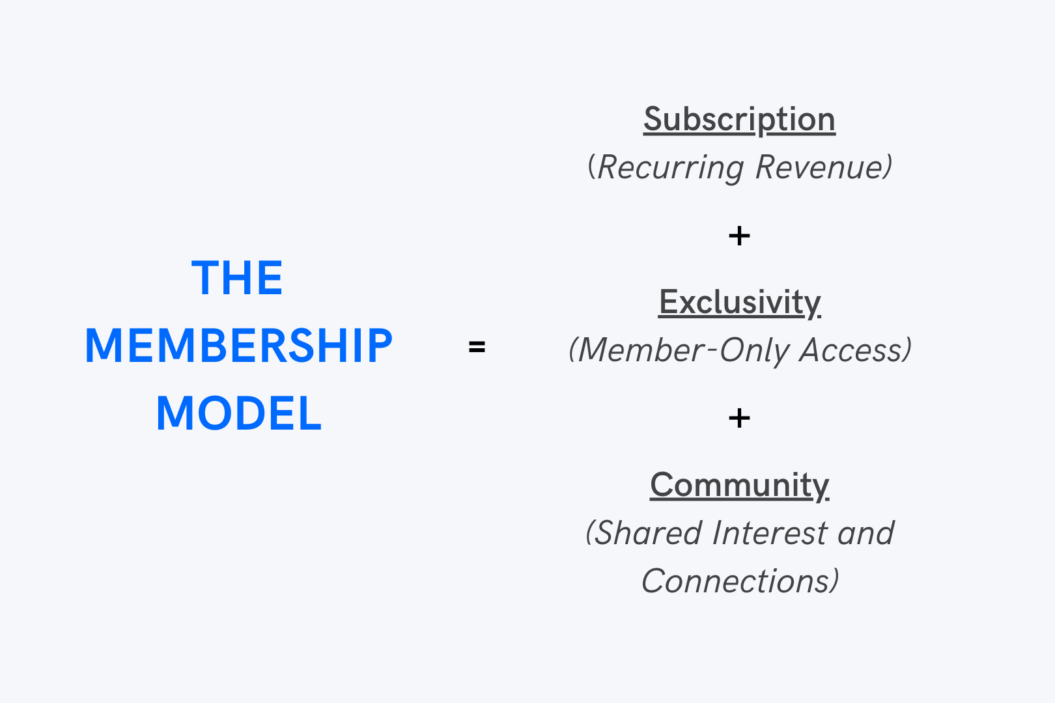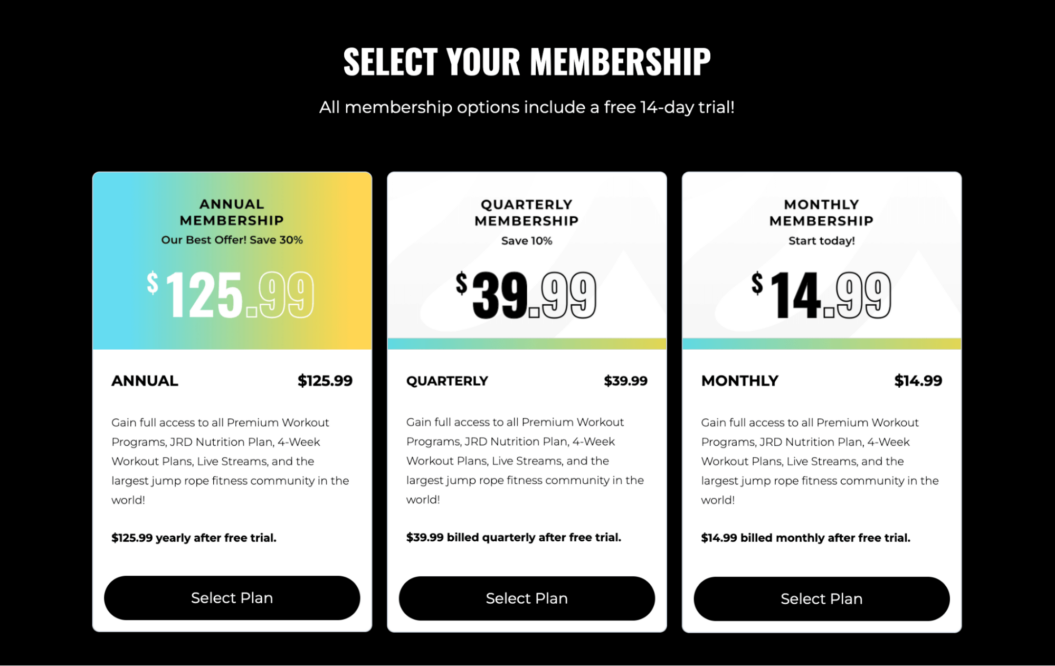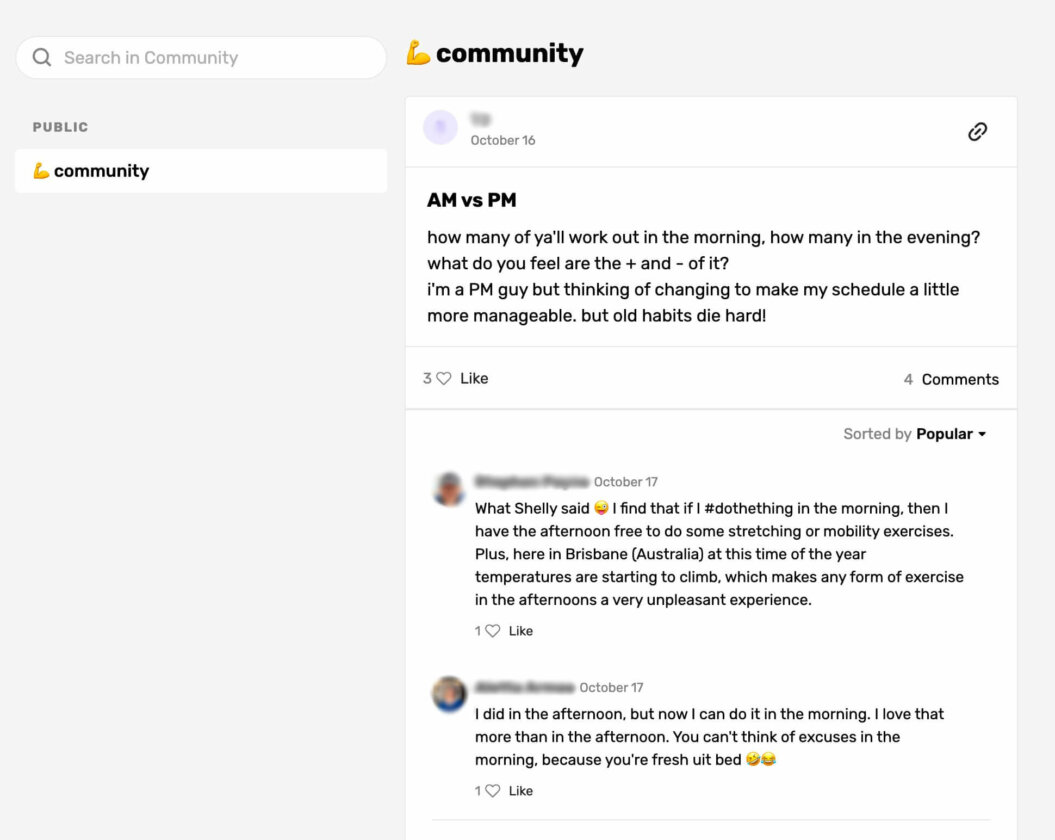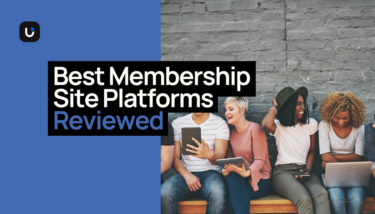Subscriptions and memberships.
These are 2 distinct business models that seem to have a lot of similarities on the surface – to the point where the terms “membership” and “subscription” are even used as synonyms.
But, there is one big difference that sets them miles apart and turns them into 2 totally unique content monetization models.
We’ll unpack that big difference (along with all of the small ones) in this article.
Plus, we’ll help you figure out which business model would work best for you and your goals as a creator and business owner.
Let’s dive in!
If you prefer to watch, we got you – we cover the basics in this video:
The Subscription Model Explained
The subscription business model is simply a payment model. It involves putting your exclusive content behind a paywall, and charging subscribers a recurring fee in exchange for access to it.
Think of your monthly subscription to a streaming service like Netflix or Amazon Prime:
You pay a monthly fee, and in exchange you gain access to a library of content that – generally – you can’t find anywhere else.
And, as a subscriber, that’s where your relationship with these streaming services begins and ends.
Your decision to sign up or stick around is based solely on the volume and exclusivity of content you receive from the subscription service.
So, when you feel like you can get a better deal on subscription fees with another platform – or you simply can’t justify the $20 a month just to rewatch the same old shows over again – it’s easy enough to click ‘Cancel’ without a second thought.
With a customer relationship that’s so transactional and surface-level, a subscription-based business becomes a revolving door of subscribers who seem to cancel as quickly as they sign up.
Which leaves this type of business with 2 options:
- Increase the publishing volume and frequency of high-quality, new content. Though this can put a big strain on resources and lead to burnout, especially for small teams.
- Reach and convert a huge number of subscribers on a regular basis. Though this is hard to do, and acquiring new customers costs a lot of money.
So – while the recurring revenue model has potential – the subscription model as a whole has some serious limits to it.
Which brings us to the business model that breaks through those limits: memberships.
The Membership Model Explained
The membership business model has taken the best parts of the subscription model (recurring payments and exclusivity) and combined them with one game-changing element: belonging.
Think about it: what are you a member of? How does it make you feel to be a member of something? And does being a “subscriber” hold the same weight for you?
Memberships capitalize on that nuance to create higher value for subscribers and more reasons to stick-around for longer.
Creating a sense of belonging may sound elusive (maybe a bit mistical even). But it’s actually quite simple. It all comes down to one thing: community.
Community: What Seperates Memberships from Subscriptions
The beauty of a membership community is that it gives members something to belong to, as opposed to a subscription which is something that anybody can simply buy.

While an exclusive community might sound like a small addition, the sense of belonging it brings has a big, data-backed impact. We’ll do a deep-dive into the specifics of that impact later on in this article…
But the gist of it is that membership communities lead to higher member engagement, and increased member retention.
And, by leveling up the simple subscription model, memberships are able to expand their offering to include exclusive benefits and members-only perks.
Take Jump Rope Dudes for example, a membership site that offers 3 membership plans.

Each plan grants the same level of access to the membership program and unlocks exclusive perks, but the longer the commitment, the bigger the discount members can receive.
These discounts, along with the add-ons that go beyond a regular content subscription, allow membership businesses to easily upsell their members to more premium and longer-term membership plans, because members want to gain access to the extras.
Membership sites remove some of the pressure to constantly be creating content, and allow creators to cultivate a community of like-minded folks.
To see that in action, here’s a sneak-peek of Jump Rope Dudes’ exclusive membership community:

As a whole, membership-based businesses are kinder to the creators who run them than business models that rely on a constant influx of new customers – like subscriptions or online courses.
Before we run through the benefits of a membership community, let’s first dive deeper into the all of the key differences that set memberships apart from subscriptions.
Other Key Differences Between Memberships and Subscriptions
Like I said earlier, the membership model and subscription model share many similarities. After all, they both operate behind a paywall, offer exclusive content, and charge recurring fees.
But with belonging and community at the core of what tells them apart, let’s take a closer look at how that touches every part of the business:
| Key Difference | Memberships | Subscriptions |
| What they offer | Memberships offer a library of exclusive content, consisting of videos-on-demand (VODs) and livestreams, as well as exclusive benefits and community access. | Subscriptions offer a catalogue of exclusive video-on-demand (VOD) content. |
| Their revenue model | Memberships generate recurring revenue through monthly and annual fees. Memberships can also sell or rent individual pieces of content, which can generate additional revenue through one-time payments. | Subscriptions generate recurring revenue, through monthly or annual subscription fees. |
| What their platform consists of | Membership platforms often have a branded membership site and apps. The primary areas for members are the video catalogue, video player, as well as a dedicated community area. | Subscription platforms usually have a branded website and apps, where the video catalogue and video player are the primary areas for subscribers. |
| The model’s primary advantage | The membership model is primed for retention, thanks to the element of community which keeps members engaged, fulfilled and more likely to stick around. | Subscription services often benefit from a broad appeal and simple subscription plan offering, allowing them to reach and potentially convert a wide market. |
| The model’s primary disadvantage | Memberships have a more niche appeal, which requires a good understanding of the target audience in order to regularly convert a large number of new members. | Subscription businesses often struggle with high churn rates due to content saturation and competition. |
You’ll notice that most of the differences here tie back to the fact that memberships have communities built-in, while subscriptions don’t.
It’s time to explain why a membership community is such a crucial factor in a creator-entrepreneur’s long-term success, and how exactly it benefits the business model.
The Benefits of Belonging: Why Community is Crucial for Creators
The biggest flaw in the subscription model is that there’s nothing connecting the subscriber to the service.
Take Netflix, for example.
Despite it being one of the biggest streaming services in the world, with seemingly endless resources and new content, people are still canceling their subscriptions every day. And most of them don’t even give it a second thought.
That’s because canceling a subscription is an easy decision when there’s no community or human connection to part with.
On the flip side: if you’re anything like me, you might open TikTok or Instagram about 5-10 times a day. Like many others, I’ve even tried deleting the apps and deactivating my accounts, but I can’t seem to shake them.
(Yes, my screen time and I need help).
But there’s a very good – and very human – reason why so many people can’t keep away from various forms of social media: community.
The sense of belonging and connection that comes with being part of a community is a powerful driver for consumer behaviour (aka whether we buy something, and how long we stick around for as customers).
A company who perfectly plays into that idea of sharing experiences with your community is music streaming service, Spotify.

Between collaborative listening features and the ever anticipated Spotify Wrapped, the music streaming platform finds creative ways to integrate a sense of community into their product, and as a result the business:
- Increases customer loyalty. These features give subscribers a reason to stick around for the extra value, convenience, and conversation.
- Differentiates itself from competitors. People could listen to their music or podcasts on any platform, but they want to share the experience with their friends and followers.
- Boosts word-of-mouth and sales. Collaborative functionality entices people to sign up to share experiences with their friends. (And the social sharing impact of Spotify Wrapped needs no explanation).
The same benefits apply to the membership business model. A membership community taps into this desire for belonging, and pairs it with exclusive content.
As a result, the exclusive content gives people a reason to sign up, and the community gives members a reason to stick around.
Why Creators Should Care About Retention
Keeping members around longer is crucial for creators on 2 levels: financial, and personal.
- On a financial level, retention matters because increasing customer retention rates by only 5% increases profits by up to 95%. Plus, it’s 5 to 25 times more expensive to acquire a new customer than it is to retain an existing one.
- And on a personal level, trying to fix customer churn is hard, and takes a lot of time and money. It can even lead to burnout, especially if you’re a new business owner who’s just starting out.
So, if retaining members is the key to sustainable success, that makes community crucial for you.
Our data shows that a membership with an active community experiences 2x less churn compared to those without.
We’ve also found that members who have engaged with other members in the community use the membership site and app more frequently, consume more content, and stay on the platform longer.
Not only do these loyal customers spend more money throughout their membership, but they also become advocates for the membership program itself; increasing word-of-mouth marketing and in turn, sales.
Which Business Model Should You Choose?
At this point, the differences between memberships and subscriptions are clear – but one question still remains…
Which model should you pursue?
If you’re a creator wanting to make more money from your content, we recommend building a membership site.
If you’re an entrepreneur wanting to build an online business, we recommend creating a subscription site.
Here’s why:
Memberships work best for creators who have already created an engaged audience. Your audience doesn’t need to be big either, simply engaged with your content and eager for more.
That’s because this business model is designed to help you monetize your content as well as the connection you’ve built with your following.
Things that are specific to the membership model – like community discussions, exclusive livestreams, members-only challenges, etc. – allow you to nurture your relationship with your audience and charge premium fees for these value add-ons.
Not only that, but remember when we said that memberships with active communities see 2x less churn than subscriptions without communities?
That means that your members are much more likely to stick around, so the work you put in to getting new members to sign up has a much better chance of resulting in long-term growth for your business.
When you’re not constantly battling a subscriber churn problem, you’re able to avoid burn out and settle into a more sustainable and fulfilling schedule that balances content creation with community building. (And profit, of course).
Plus, a membership helps you to sell add-on purchases and build out your other revenue streams. People who are emotionally invested in your brand want more from it, so you can offer…
- Digital products.
- Online courses and webinars.
- Merch.
… and expect support from your engaged community.
On the flip side, subscriptions work best for entrepreneurs who want to sell premium content, but they aren’t necessarily the face of the brand.
Calling back to Netflix as an example, they have a system of outsourcing content creation that the company then monetizes on their platform.
Subscriptions typically have almost no involvement with the paying subscribers, they’re simply expected to provide a product in exchange for a monthly fee. As a result, they’re a better fit for people who are looking to run a more hands-off, “set it and forget it” online business.
eCommerce services like monthly subscription boxes are a great example of this.
As a content creator, you could potentially make money using a subscription model, but you’d be missing out on all the benefits of a membership community.
Plus, you would either have to pay to outsource your creation or tow the line of burnout in order to meet subscriber’s constant demand for new products, aka new content.
Wrapping Up
Memberships and subscriptions are often used as synonyms, but for content creators, knowing the key differences is important.
Only one of these models will help you use your skills to build a better, more sustainable, and more fulfilling type of business. That’s what makes memberships a content creator’s best friend.






